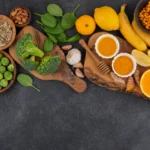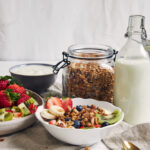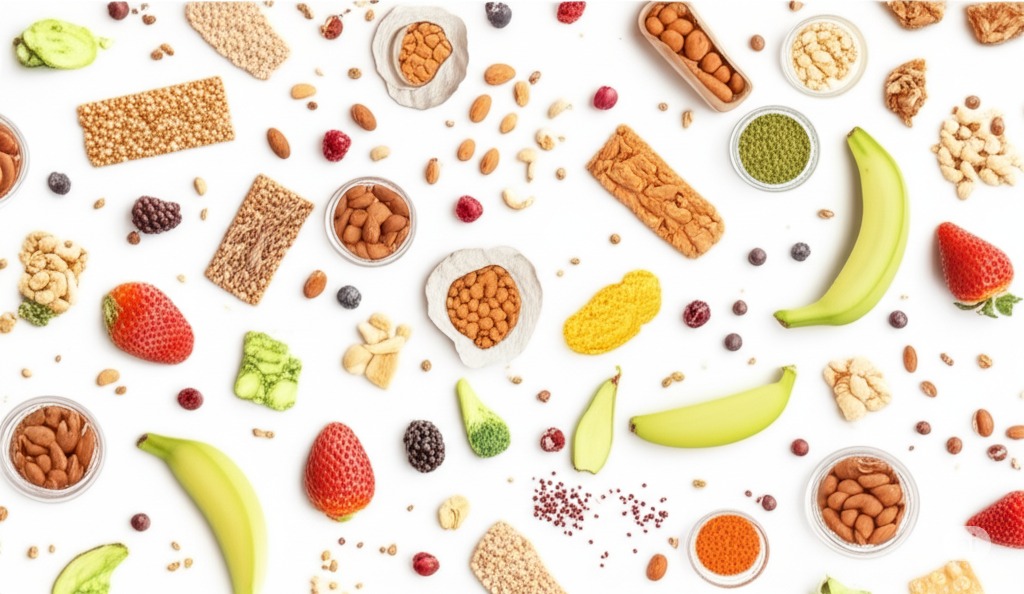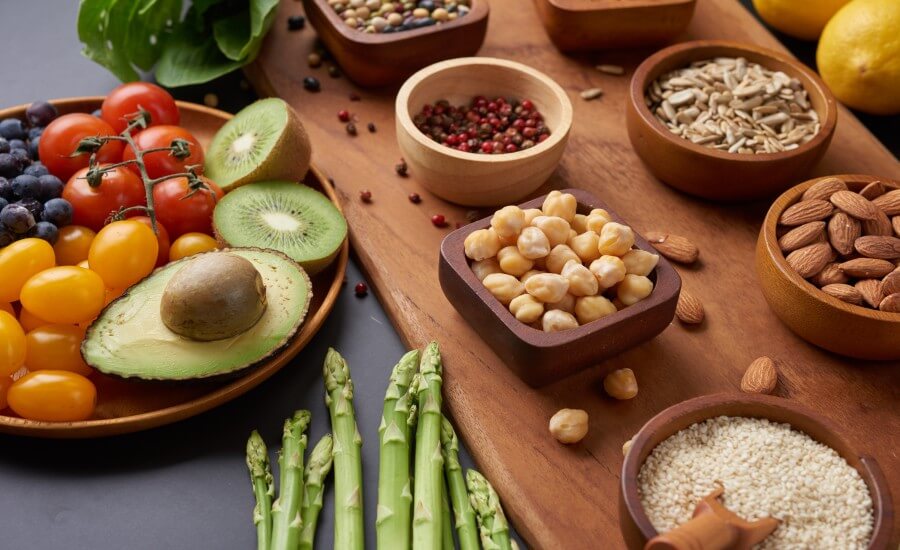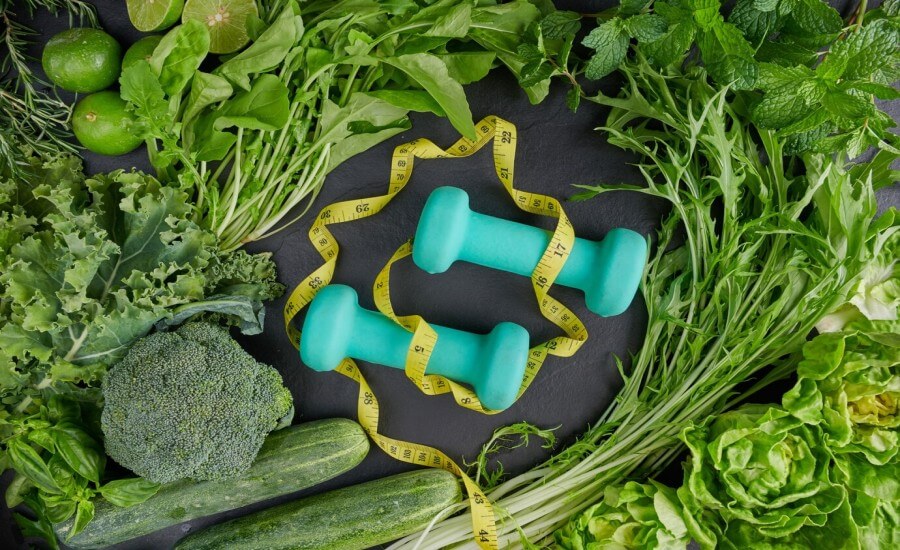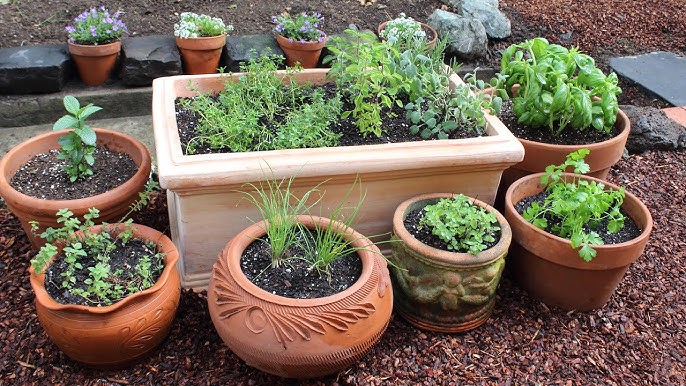Snack time is a vital part of a child’s day, providing essential energy boosts between meals, bridging nutritional gaps, and keeping little tummies satisfied and happy. For families following a vegan lifestyle, ensuring these snacks are not only plant-based but also packed with the nutrients growing bodies need is key. Forget relying solely on packaged biscuits or chips! This guide explores the wonderful world of nutritious vegan snacks for kids, offering creative ideas, practical tips, and recipes. We’ll examine snacks through the lenses of child nutrition, ethical considerations, environmental impact, and real-world preparation strategies suitable for families here in Jaipur and across India, proving that healthy vegan snacking can be both easy and delightful.
LENS 1: Nutritional Analysis (Powering Playtime)

Growing children have high energy and nutrient demands. Well-planned vegan snacks play a crucial role in meeting these needs beyond main meals.
- Fueling Energy & Growth: Snacks should provide sustained energy, not just a sugar rush. Focus on combining:
- Complex Carbohydrates: Whole fruits (banana/kela, apple/seb, mango/aam – perfect for Jaipur summers!, papaya/papita), whole grains (oats, whole wheat roti rolls, millet-based snacks like ragi cookies/ladoos), vegetables (sweet potato/shakarkandi).
- Protein: Essential for growth and satiety. Offer age-appropriately prepared nuts (almonds/badam, peanuts/moongphali) and seeds (pumpkin, sunflower, sesame/til – think til ladoos!), nut/seed butters, roasted chickpeas (chana), hummus, edamame, small cubes of cooked tofu.
- Healthy Fats: Crucial for brain development and energy. Found in avocado, nuts, seeds, peanut butter, tahini.
- Key Micronutrients for Vegan Kids: Snacks can help top up nutrients that need extra attention:
- Calcium: Fortified plant milks/yogurts (used in smoothies/puddings if accessible), calcium-set tofu snacks, sesame seeds (til), ragi (finger millet).
- Iron: Dried fruits (raisins/kishmish, apricots, figs/anjeer), pumpkin seeds, lentils (in savory snacks like mini dhoklas or patties), hummus. Tip: Pair iron-rich snacks with Vitamin C sources (like fruits, lemon juice, amla) to boost absorption.
- Zinc: Pumpkin seeds, sesame seeds, nuts, chickpeas/lentils.
- Vitamin D: Primarily from sunlight exposure (ensure safe exposure, especially for kids) and fortified foods or supplements. Snacks usually aren’t primary sources.
- Vitamin B12: Cannot be obtained reliably from plant-based snacks unless they are specifically fortified (like some cereals or nutritional yeast sprinkled on savory snacks). Daily supplementation or consistent intake of fortified foods is essential for vegan children.
- Snack Smart Considerations:
- Portion Sizes: Keep snacks appropriately sized for small appetites, complementing rather than replacing meals.
- Whole Foods First: Prioritize snacks made from whole ingredients over highly processed vegan cookies, chips, or candies, which are often high in sugar, salt, and unhealthy fats. Read labels carefully on packaged goods.
- Appeal Factor: Use colours, fun shapes (cookie cutters for fruits/sandwiches), and varied textures to entice kids.
- Choking Hazards: Be mindful for toddlers and very young children – cut grapes/cherry tomatoes lengthwise, avoid whole nuts (use butters/ground nuts instead), supervise eating. What nutrient-dense whole food (fruit, veg, nut, seed) can you easily incorporate into your child’s snack routine today?
Nutritional Deep Dive: Calcium & Iron Power-ups in Vegan Snacks
Meeting calcium and iron needs requires planning. Snacks can help:
- Calcium:
- Blend fortified plant milk into smoothies.
- Offer calcium-set tofu cubes with a dip.
- Make vegan ’til ke ladoo’ (sesame seed balls, use jaggery/dates instead of refined sugar).
- Use ragi flour (finger millet) in baked snacks like cookies or savory pancakes.
- Sprinkle sesame seeds on snacks.
- Iron:
- Offer small boxes of raisins or dried apricots/figs.
- Serve hummus with veggie sticks or whole wheat pita.
- Make energy bites with oats, dates, and pumpkin seeds.
- Serve roasted chana (chickpeas).
- Crucially: Include a Vitamin C source alongside iron-rich snacks (e.g., serve roasted chana with orange slices, add lemon juice to hummus).
Voice of Experience (Pediatric Dietitian, India): “Vegan snacks for children should focus on nutrient density. Fruits provide vitamins and energy, nuts/seeds (age-appropriately) offer protein and healthy fats, legumes like roasted chana or hummus boost protein and iron. Incorporating fortified plant milks or traditional calcium-rich ingredients like ragi and sesame seeds is important. Always ensure reliable B12 intake through supplements or fortified foods alongside meals.” – Dr. Sunita Malik, RD (Pediatrics)
LENS 2: Ethical Framework (Kind Bites)

Snack time offers daily opportunities to nurture compassionate and conscious eating habits in children.
- Compassion on the Go: Providing vegan snacks reinforces the principle of kindness to animals in a relatable, everyday context. It normalizes plant-based eating from a young age.
- Ethical Sourcing Lessons: Use snack time to talk simply about where food comes from. Choose Fair Trade bananas or cocoa (for chocolate snacks). Buy local, seasonal fruits from Jaipur markets, explaining you’re supporting nearby farmers. This plants seeds of conscious consumerism.
- Fighting Packaging Waste: Kids’ snacks are often notorious for excessive single-use plastic packaging. Making snacks like granola bars, energy bites (ladoos), fruit leather (aam papad), or simply packing cut fruit/veg in reusable containers significantly reduces waste, teaching environmental responsibility.
- Respecting Food: Encourage children to eat the snacks provided and not waste food, fostering gratitude and respect for the resources involved. Use slightly bruised fruit for smoothies or baking rather than discarding it.
- Inclusivity in Social Settings: Prepare appealing vegan snacks that vegan children can confidently take to school or parties, ensuring they feel included. Offering delicious vegan snacks at your own child’s party can also be a gentle form of advocacy. How can preparing a simple homemade snack together become a moment to teach your child about reducing waste or appreciating food?
Hidden Benefits: Cultivating Empathy & Awareness
Regularly choosing and discussing plant-based, ethically sourced, low-waste snacks helps children develop empathy for animals, awareness of environmental issues, and mindfulness about their consumption habits from an early age.
Voice of Experience (Vegan Parent & Educator): “Snack time is a fantastic teachable moment! We make energy ladoos together using Fair Trade dates and local peanuts, talking about why we choose kind ingredients. Packing fruit in reusable boxes instead of plastic pouches sparks conversations about waste. It’s about embedding values into daily routines naturally.” – Mrs. Anjali Sharma, Jaipur Parent
Critical Reassessment: Balancing Ideals with Reality
While homemade, ethically sourced, zero-waste snacks are the ideal, parents face real-world pressures of time, convenience, cost, and picky eating. It’s okay to sometimes rely on carefully chosen packaged vegan snacks. The goal is progress and conscious choices where feasible, not unattainable perfection that leads to stress.
LENS 3: Ingredient Science & Environment (Sustainable Snacking)
Understanding snack ingredients and their environmental context guides sustainable choices.
- Snack Science Fun:
- Chia Pudding: Chia seeds absorb liquid via hydrophilic polysaccharides on their outer layer, creating a gel – fun to watch!
- Energy Bites/Ladoos: Dates or nut butters act as sticky binders due to sugars and fats, holding oats, nuts, and seeds together.
- Fruit Ripening: Bananas get sweeter as starches convert to sugars; overripe ones are perfect for smoothies or nice cream. Baking concentrates fruit sugars.
- Environmental Footprint:
- Plant vs. Animal Snacks: Plant-based snacks like fruits, vegetables, nuts, seeds, hummus, and grain-based items have significantly lower greenhouse gas emissions, land use, and water footprints compared to dairy-based snacks like cheese sticks, yogurt tubes, or milk drinks.
- Local & Seasonal Priority: Choosing fruits readily available in Jaipur’s current season (mangoes, melons, papayas, bananas) drastically reduces transport emissions compared to imported apples or berries. Winter snacks could feature local guava (amrood) or oranges (santra).
- Low-Impact Staples: Snacks based on affordable Indian staples like roasted chana, puffed rice (murmura), peanuts, sesame seeds (til), and local millets (bajra/ragi used in baked goods) are highly sustainable choices.
- Packaging:* The biggest environmental win with homemade snacks is the massive reduction in single-use plastic wrappers, tubs, and pouches common with commercial kids’ snacks. Bulk buying ingredients like oats, nuts, seeds, and dried fruit further reduces packaging. What locally available, low-impact ingredient (like peanuts or murmura) could become a staple in your kids’ vegan snack rotation?
Market Transformation Map Suggestion: Data showing the growth of the packaged snack market overall, but also a rising niche segment for specifically ‘vegan’ or ‘plant-based’ kids’ snacks, alongside continued strong presence of traditional homemade snack ingredients in Indian markets.
Voice of Experience (Sustainability Educator): “Snack time offers a huge opportunity for sustainable choices. Swapping dairy yogurts for fruit or homemade vegan energy bites, choosing local seasonal fruits over imported ones, and ditching single-use plastic wrappers for reusable containers collectively make a significant positive environmental impact. Teach kids these habits early!” – Dr. Rahul Choudhary, Environmental Studies Professor
LENS 4: Everyday Practitioner’s Experience (Recipes, Prep & Kid Appeal)
Let’s get practical with nutritious vegan snacks for kids that are easy, appealing, and utilize ingredients common in India.
Kid-Friendly Vegan Snack Ideas:
- Fresh & Fruity:
- Seasonal Fruit Platter: Offer a colourful mix – right now in Jaipur, think mango slices, watermelon cubes, papaya chunks, banana. Serve plain or with a simple vegan yogurt dip (if accessible).
- Fruit Chaat (Kid-Style): Mix chopped fruits (apple, banana, pear, grapes – cut for toddlers!) with a tiny pinch of chaat masala and black salt (optional, omit for very young kids).
- Apple/Banana “Donuts”: Core apples and slice into rings, or slice bananas. Spread with peanut/almond butter and sprinkle with seeds or granola.
- Frozen Fruit Pops: Blend fruit (mango, berries) with a little plant milk or coconut water and freeze in popsicle molds. Perfect for summer heat!
- Aam Papad (Fruit Leather – Healthier Homemade): Blend ripe mango puree (add dates for extra sweetness if needed), spread thinly on a tray lined with parchment/greased plate, sun-dry (protect from dust/insects) or use oven on lowest setting until leathery. Cut into strips.
- Veggies & Dips:
- Veggie Sticks: Cucumber (kheera), carrot (gajar), bell pepper (shimla mirch) sticks served with hummus (easy homemade with chana) or peanut butter thinned with water.
- Roasted Chana: Toss boiled chickpeas with a tiny bit of oil and spices (cumin, chaat masala, maybe paprika – mild for kids). Roast/air-fry until crispy. Addictive and protein-packed.
- Sweet Potato (Shakarkandi) Fries/Cubes: Bake or air-fry sweet potato wedges/cubes with minimal oil and mild spices.
- Grains, Legumes & Bites:
- Murmura Bhel (Vegan): Puffed rice mixed with finely chopped onion, tomato, boiled potato, roasted peanuts, coriander, lemon juice. Ensure any added chutneys or sev are vegan (or omit sev).
- Energy Ladoos/Bites: Process rolled oats + dates (khajoor) + nuts (peanuts/almonds) + seeds (sesame/til/chia) + maybe cocoa powder or cardamom. Roll into small balls. No-bake and easy!
- Mini Roti Rolls: Spread hummus or peanut butter on a small whole wheat roti, add grated carrot or cucumber, roll up, and slice into pinwheels.
- Baked Veggie Tikki/Cutlet: Mashed potatoes/sweet potatoes mixed with peas, carrots, spices, breadcrumbs/besan for binding. Form small patties and bake until golden.
- Puddings & Smoothies:
- Chia Seed Pudding: Mix chia seeds with plant milk and a touch of sweetener/fruit puree. Let set in the fridge. Top with fruit.
- Avocado Chocolate Pudding: Blend ripe avocado + cocoa powder + sweetener + splash of plant milk until smooth. Surprisingly decadent and full of healthy fats.
- Simple Fruit Smoothies: Blend banana/mango + plant milk + maybe a few spinach leaves (they won’t taste it!) + optional chia/flax seeds.
Tips for Kid Appeal & Prep:
- Make it Colourful & Fun: Use variety! Cut fruits/veg/sandwiches into fun shapes with cookie cutters. Arrange snacks attractively (smiley faces, skewers).
- Involve Them: Let kids help wash fruits, mix energy bites, choose toppings, or arrange platters. They’re more likely to eat what they helped make.
- Make Ahead: Prepare energy bites, granola bars, muffins, roasted chana, hummus, or chopped veggies on weekends or evenings for grab-and-go snacks.
- Portion Control: Offer snacks in small, manageable portions.
- Dip It! Many kids love dipping – offer hummus, nut butter, vegan yogurt dip, or simple fruit puree alongside veggie/fruit sticks.
- Heat-Stable Snacks (for Jaipur Climate): For school boxes or outings without cooling, focus on roasted chana, energy bites, fruit leather, trail mix, certain baked goods, fresh fruit that holds up well (apples, bananas). Avoid creamy dips or easily perishable items unless packed with an ice pack.
- Spice Level: Adjust spices according to your child’s tolerance – start mild.
What simple, make-ahead vegan snack could you prepare this weekend for the upcoming week?
Daily Impact: The Snack Rotation
Keep a running list of successful, nutritious snacks your child enjoys. Rotate through them weekly to ensure variety and prevent boredom, incorporating seasonal specials.
Voice of Experience (Vegan Parent in India): “My kids love fruit chaat with a tiny pinch of chaat masala, roasted makhana, and homemade ’til gud ke ladoo’ (using dates instead of just jaggery). For school, fruit, roasted chana, or small roti rolls with peanut butter work well in the Jaipur heat. It’s about finding simple, whole-food options they enjoy!” – Mrs. Priya Jain, Mother of Two
Alternative Approaches: Store-Bought & Picky Eaters
- Store-Bought Savvy: If buying packaged snacks, read labels carefully. Look for minimal ingredients, low added sugar/sodium, whole grains, and check for hidden dairy/honey. Options might include some roasted snacks, fruit bars, or plain crackers.
- Picky Eaters: Offer choices (within healthy parameters). Serve familiar foods alongside new ones. Don’t pressure, but keep offering small tastes. Involve them in selection/prep. Make food fun visually. Hide veggies in muffins, smoothies, or sauces.
PERSPECTIVE INTERSECTION MATRIX
- Nutrition & Appeal (Lens 1 & 4): Meeting kids’ nutritional needs (Lens 1) requires making healthy snacks appealing and practical for parents to prepare (Lens 4). Fun presentation (Lens 4) encourages intake of nutrient-dense foods (Lens 1).
- Ethics & Packaging (Lens 2 & 4): The ethical goal of reducing waste (Lens 2) is achieved through practical choices like making homemade snacks and using reusable containers (Lens 4), avoiding single-use plastics common in kids’ snacks.
- Environment & Locality (Lens 3 & 4): Choosing sustainable, local, seasonal fruits and staples (Lens 3) is put into practice when preparing snacks based on market availability in Jaipur (Lens 4).
- Science & Texture (Lens 3 & 4): Understanding how ingredients like chia seeds gel or dates bind (Lens 3) helps parents create snacks with appealing textures for kids (Lens 4).
- Practicality & All Factors (Lens 4 & 1/2/3): Busy parents (Lens 4) need snack solutions that are quick/make-ahead (Lens 4), nutritious (Lens 1), align with values (Lens 2 – vegan, low waste), and ideally use accessible, sustainable ingredients (Lens 3).
MISCONCEPTION ANALYSIS
| Misconception | Reality |
| Vegan snacks lack essential nutrients like protein and calcium for growing kids. | Well-planned vegan snacks can be rich in these! Protein comes from nuts/seeds/butters, legumes (hummus, roasted chana), tofu. Calcium comes from fortified plant milks/yogurts, sesame seeds, ragi, tofu. Variety and planning are key. |
| Kids won’t eat vegan snacks; they only want chips and cookies. | Kids enjoy flavour, fun, and familiarity! Offer appealing presentations (colours, shapes), involve them, provide tasty dips, focus on naturally sweet fruits, and create healthier homemade versions of treats (oat cookies, energy bites). Many kids love fruit, hummus, or roasted chana. |
| Preparing healthy vegan snacks from scratch takes too much time for busy parents. | Many nutritious options are incredibly fast: cutting fruit/veg, offering nuts/seeds, making a quick smoothie. Others like energy bites, muffins, or roasted chickpeas are easy to make ahead in batches on weekends for grab-and-go convenience. |
| Vegan snacks are boring and limited to just fruits and vegetables. | The variety is huge! Think energy bites, granola bars, muffins, cookies, puddings (chia/avocado), smoothies, savory dips with crackers/veggies, roasted legumes, fruit leathers, nice cream, savory baked goods, roti rolls, mini pizzas on bases… |
| Finding ingredients for healthy vegan kids’ snacks is difficult in India. | Many core ingredients are Indian staples! Fruits (mango, banana, papaya), vegetables (cucumber, carrot), legumes (chana), nuts (peanuts, almonds), seeds (sesame), grains (oats, murmura, millets like ragi/bajra), jaggery are all widely available and affordable. |
KEY TURNING POINTS
- Increased Focus on Child Nutrition: Growing awareness about healthy eating habits from a young age and concerns about processed snacks.
- Rise of Vegan Families: More parents raising children vegan, creating demand for kid-friendly recipes and resources.
- Pinterest & Social Media Influence: Popularized creative food presentation (“bento boxes,” fun shapes) making healthy food more appealing to kids.
- Food Blogs & Online Communities: Extensive sharing of tried-and-tested vegan snack recipes specifically designed for children, including allergy-friendly options.
- Availability of Ingredients: Easier access to ingredients like chia seeds, diverse nut butters, and fortified plant milks in many areas.
SYNTHESIS & RECOMMENDATIONS
Fueling growing bodies with nutritious vegan snacks for kids is not only possible but can be a fun, delicious, and rewarding experience for the whole family. By focusing on whole plant foods – colourful fruits and vegetables, satisfying proteins from nuts, seeds, and legumes, and energy-boosting whole grains – you can provide snacks that support healthy development while aligning with compassionate and sustainable values. Making snacks appealing through presentation, involving children in the process, and utilizing make-ahead strategies are key for success. Embrace the bounty of local, seasonal ingredients available in Jaipur, get creative in the kitchen, and watch your kids thrive on kind bites!
Recommendations for Nutritious Vegan Kids’ Snacks:
- Prioritize Whole Foods: Base snacks on fruits, vegetables, nuts (age-appropriate), seeds, legumes, and whole grains. Limit processed options high in sugar/salt.
- Balance for Energy: Combine carbohydrates with protein and/or healthy fats in most snacks to promote sustained energy and satiety.
- Make it Fun & Appealing: Use colours, shapes, dips, and creative names to entice kids.
- Involve Your Child: Let them help choose, wash, mix, or assemble snacks.
- Prep Ahead: Make batches of energy bites, muffins, roasted chickpeas, or chop fruit/veg in advance for quick grab-and-go options.
- Focus on Key Nutrients: Intentionally include sources of protein, iron, calcium (utilize fortified milks/yogurts if possible, plus plant sources like sesame/ragi). Remember B12 supplements/fortified foods are essential daily.
- Consider Seasonality & Locality: Use fresh, seasonal fruits and vegetables available locally (like mangoes in Jaipur’s summer!) for best taste, price, and sustainability.
- Read Labels: If buying packaged snacks, check for added sugars, sodium, unhealthy fats, and hidden animal products.
- Safety First: Be mindful of choking hazards for young children (cut small round foods, avoid whole nuts).
FURTHER AREAS OF EXPLORATION
- Nut-Free Vegan Snack Ideas for School Lunchboxes
- Creative Ways to Add Vegetables into Kids’ Snacks
- Homemade vs. Store-Bought Vegan Snacks for Kids: A Comparison
- Calcium and Iron Sources for Vegan Children: Meal & Snack Ideas
- Vegan Birthday Party Food & Snack Guide
- Traditional Indian Snacks Made Vegan & Kid-Friendly
- Dealing with Picky Eaters: Tips for Vegan Parents




